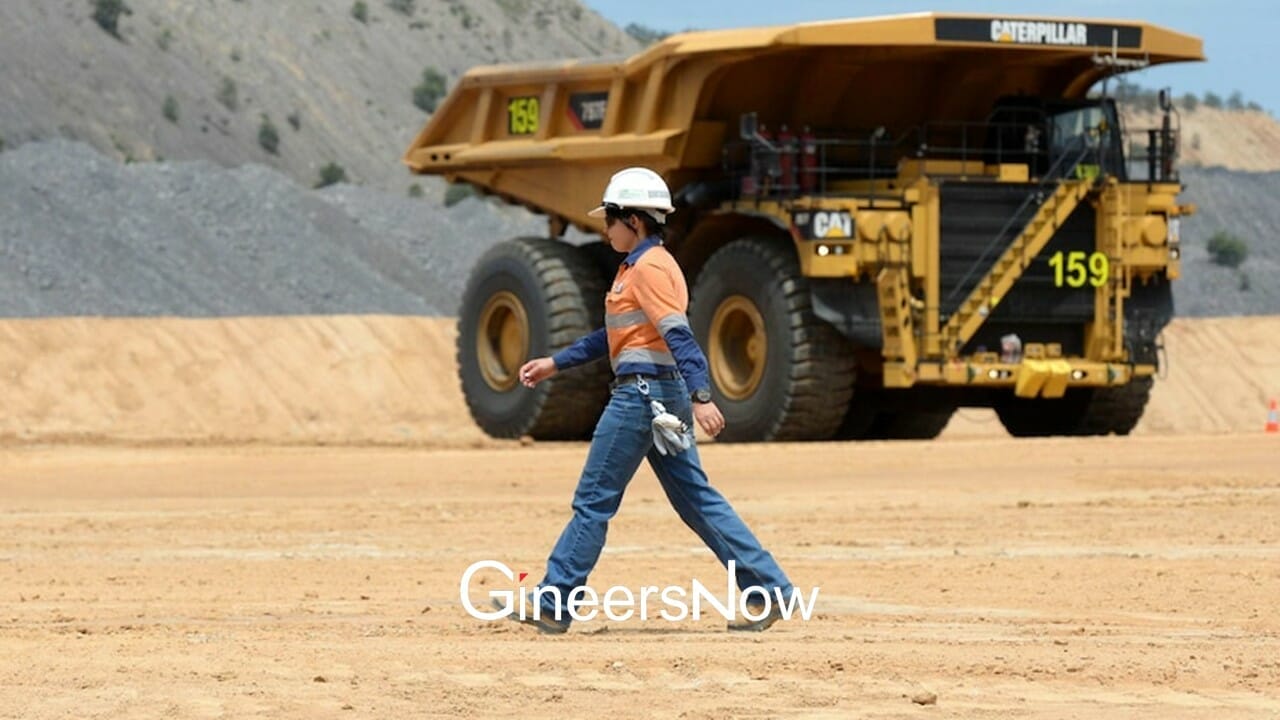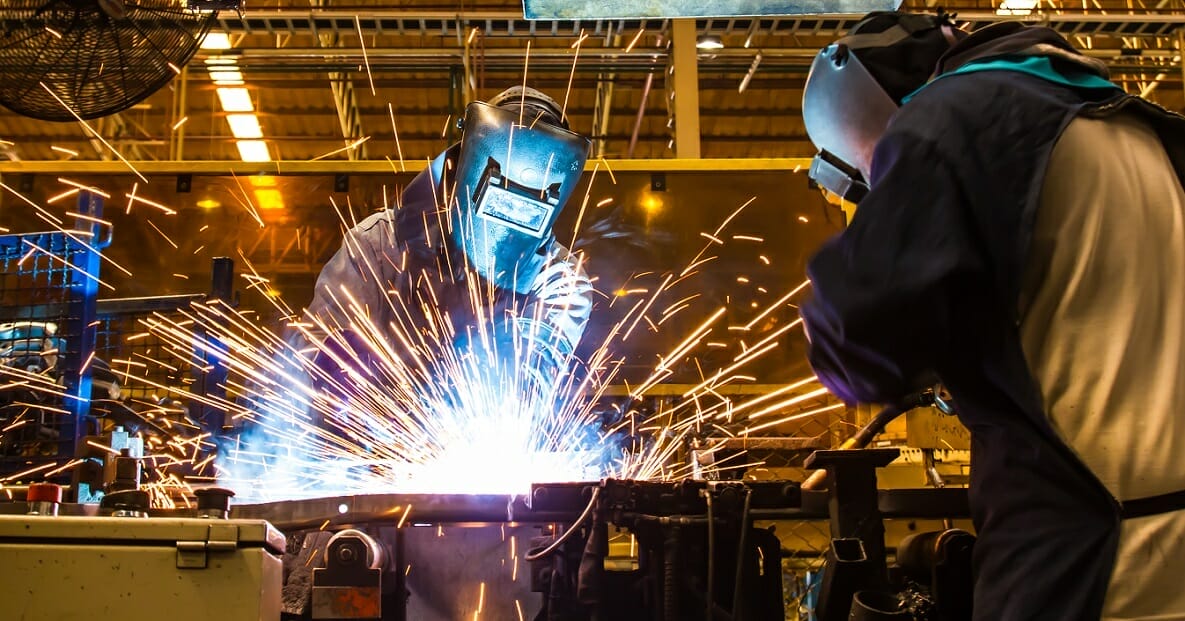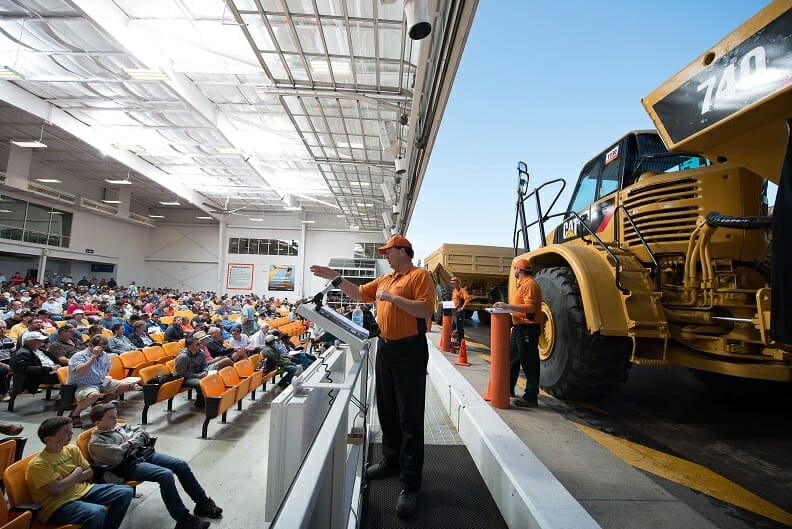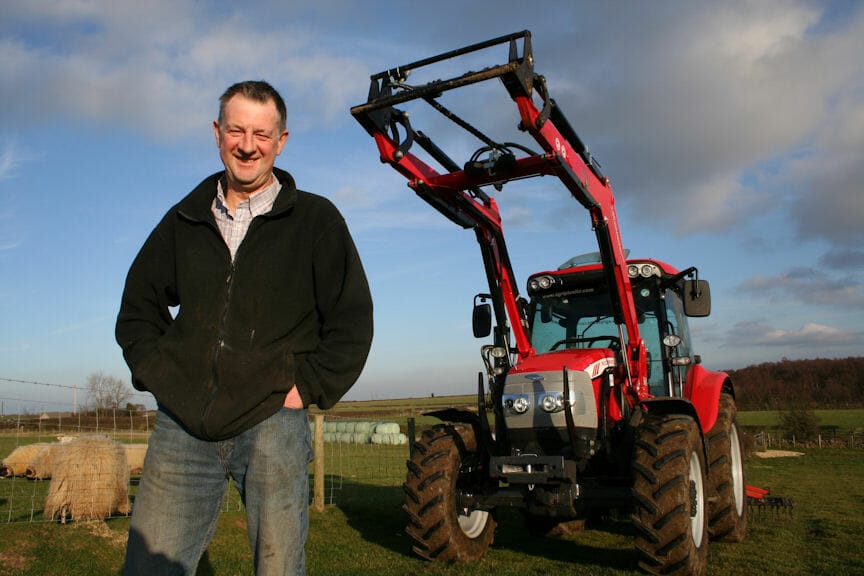From bustling city skylines to remote rural roads, these powerful machines are the unsung heroes behind every building and bridge in the Philippines, tirelessly working to transform blueprints into reality. But have you ever wondered about the diverse array of construction vehicles that navigate this archipelago’s varied terrains? In this article, we’ll explore 25 types of construction vehicles in the Philippines essential for any successful project—from nimble mini excavators perfect for tight spaces to massive dump trucks capable of hauling tons of material across rugged landscapes.
Each vehicle is designed with unique capabilities tailored to meet specific challenges, reflecting technological advancements, local needs, and environmental conditions. Join us on a journey through these mechanical marvels that drive progress and innovation across islands rich with potential!
1. Articulated Haulers
Articulated haulers are heavy-duty vehicles transporting large quantities of materials over rough terrain. They feature a pivoting joint that connects the cab and the dump bed, allowing for greater maneuverability in tight spaces and uneven landscapes. Key features include a robust chassis, high ground clearance, powerful engines, and advanced hydraulic systems that enhance their load-carrying capabilities. These vehicles are specifically engineered to handle challenging conditions often found in construction sites, mining operations, and land reclamation projects.
Articulated haulers are among the essential types of construction vehicles in the Philippines that are used across various applications. Their versatility makes them ideal for hauling soil, gravel, sand, and other aggregates necessary for infrastructure development, such as roads, bridges, and buildings. Additionally, these vehicles can efficiently transport materials on steep slopes or muddy terrain where traditional trucks may struggle. The growing demand for efficient construction solutions in urban development areas has further solidified the role of articulated haulers as vital assets within the fleet of types of construction vehicles in the Philippines.

2. Asphalt Pavers
Asphalt pavers are essential types of construction vehicles in the Philippines, designed specifically for laying asphalt on roads, bridges, and parking lots. Key features of asphalt pavers include their ability to provide a uniform thickness of asphalt, adjustable screeds for different widths, and a powerful engine that ensures efficient operation. Many models come equipped with advanced technology, such as grade control systems and automated controls that enhance precision and reduce labor costs. The mobility of these machines also allows them to easily navigate various job sites, making them indispensable in urban and rural infrastructure projects.
In terms of applications, asphalt pavers are primarily used for road construction and maintenance, including the resurfacing of existing pavements. They can handle a variety of asphalt mixes to accommodate different environmental conditions and traffic loads. Additionally, these machines are utilized in airport runway construction and industrial site developments where durable surfaces are required. With the growing demand for improved infrastructure in Luzon, Visayas, and Mindanao, understanding the role of asphalt pavers, among other types of construction vehicles in the Philippines, is crucial for successful project execution.
3. Backhoe Loaders
Backhoe loaders are versatile construction machines that combine the functionality of a loader and an excavator, making them essential for various construction projects. Key features of backhoe loaders include a front-mounted bucket for loading and lifting materials and a rear-mounted digging arm for excavation tasks. These machines offer excellent maneuverability and can operate in confined spaces, which is particularly beneficial on urban job sites. Backhoe loaders are typically equipped with powerful engines, advanced hydraulic systems, and adjustable arms to enhance their performance and efficiency.
In the Philippines, backhoe loaders serve a wide range of applications crucial to infrastructure development and maintenance. They are commonly used for digging utility lines, landscaping, material handling, road construction, and site preparation. As one of the prominent types of construction vehicles in the Philippines, they play a vital role in small-scale projects like residential developments and larger initiatives such as public works. Their versatility enables contractors to tackle diverse tasks efficiently while maximizing productivity on-site.
4. Boom Lifts
Boom lifts are versatile and essential equipment used in various industries, primarily for elevating workers and materials to high places. One of the key features of boom lifts is their extendable arm, which can reach significant heights while maintaining stability, making them ideal for maintenance, construction, and large-scale cleaning projects. Additionally, boom lifts often come equipped with rotating platforms, allowing a greater range of motion and accessibility to otherwise hard-to-reach areas. Other notable features include different power sources (electric or diesel), varying weight capacities, and compact designs that enable operation in tight spaces.
In the Philippines, boom lifts serve crucial roles across numerous applications within the construction sector. They are commonly employed in residential and commercial constructions for installing HVAC systems, painting exteriors, or performing roof repairs. As one of the prominent types of construction vehicles in the Philippines, these lifts enhance safety by allowing workers to operate at heights without the risks associated with traditional ladders or scaffolding. Furthermore, their adaptability makes them suitable for construction and events setup and telecommunications work where aerial access is necessary.
5. Bulldozers
Bulldozers are powerful and versatile construction vehicles that play a crucial role in various construction and earth-moving projects. Key features of bulldozers include a large, heavy blade at the front, which can be adjusted to push soil, rubble, or debris efficiently. They are typically equipped with tracks instead of wheels, providing better traction and stability on uneven terrain. Additionally, bulldozers often come with a ripper attachment at the rear, allowing operators to break up hard ground or rock surfaces before moving material. These features make bulldozers essential for site preparation, land grading, and clearing pathways.
Bulldozers have numerous applications in the Philippines across different sectors, such as agriculture, mining, and urban development. They are commonly used in infrastructure projects like road construction and land reclamation due to their ability to handle heavy materials and navigate challenging landscapes. As part of the broader category of types of construction vehicles in the Philippines, bulldozers contribute significantly to enhancing productivity and efficiency on job sites. Their robust design enables them to tackle tough environments while performing tasks that facilitate further development and construction activities throughout the country.
6. Cranes
Cranes are essential pieces of equipment in the construction industry, characterized by their ability to lift and move heavy materials with precision. Key features of cranes include their towering structure, which allows them to reach significant heights, and their flexibility in rotation and lifting capabilities. They typically consist of a boom, cab, counterweights, and various attachments, such as hooks or grabs, that can be used for different load types. Cranes come in various forms—such as tower, mobile, and crawler cranes—each designed to cater to specific lifting requirements based on the project’s demands.
Cranes play a vital role among the types of construction vehicles in the Philippines and are available for various applications. They are indispensable in high-rise building projects, infrastructure development like bridges and highways, and large-scale industrial tasks such as shipbuilding or oil rig setups. Cranes’ versatility allows contractors to manage heavy loads while efficiently ensuring construction site safety. As urbanization continues to surge in the Philippines, the demand for these robust machines only grows as they are integral for meeting the challenges posed by complex construction environments.
7. Cold Planers
Cold planers, known as cold milling machines, are essential equipment in road construction and maintenance. These machines are designed to remove the top layer of asphalt or concrete from pavement surfaces, allowing for repairs, resurfacing, or complete reconstruction. Key features of cold planers include their robust cutting drums equipped with sharp teeth for efficient material removal, adjustable depths for precise milling operations, and advanced control systems that enhance maneuverability and performance. Many models have integrated dust suppression systems to minimize airborne particles during operation. Additionally, cold planers often feature high transport speeds and compact designs that facilitate easy movement on job sites.
In the context of the types of construction vehicles in the Philippines, cold planers play a vital role in maintaining and improving road infrastructure across the archipelago. They are particularly useful in urban areas where heavy traffic can cause rapid deterioration of road surfaces. The applications of cold planers extend beyond simple surface repair; they also employ in-depth milling to recycle old materials to be reused in new asphalt mixes, thereby contributing to more sustainable construction practices. The versatility and efficiency of cold planers make them indispensable tools for contractors engaged in various projects ranging from small local roads to large highways, ensuring that Philippine infrastructure remains safe and reliable for its users.
8. Combine Harvesters
Combine harvesters are advanced agricultural machines designed to efficiently harvest crops such as wheat, barley, corn, and rice. The key features of combine harvesters include a cutting platform for reaping, a threshing system that separates grain from the plant material, and a grain tank for storage. These machines often come equipped with advanced technology such as GPS and yield monitoring systems, enhancing precision in farming practices. Their ability to perform multiple functions—cutting, threshing, and cleaning—in one pass makes them invaluable to modern agriculture, significantly reducing labor costs and increasing productivity.
Combined harvesters are increasingly important for enhancing crop yields and efficiency in Visayas and Mindanao, where agriculture is an integral part of the economy. Given the various types of construction vehicles in the Philippines, including those used for agricultural purposes like combine harvesters, farmers can optimize their operations by integrating these machines into their workflows. The applications of combine harvesters extend beyond simple harvesting; they also facilitate better land management practices and contribute to sustainable farming by minimizing soil disturbance. As farmers seek ways to improve productivity amidst challenges such as climate change and labor shortages, the adoption of combined harvesters is expected to rise significantly in this region.
9. Concrete Mixer Trucks
Concrete mixer trucks are essential vehicles in the construction industry, designed specifically for transporting and mixing concrete. One of the key features of these trucks is their rotating drum, which keeps the concrete in a liquid state during transit to prevent it from hardening. Additionally, many concrete mixer trucks have advanced hydraulic systems allowing precise control over the concrete discharge. Some models also offer enhanced mobility with all-wheel drive capabilities, allowing them to navigate challenging job sites more effectively. Integrating GPS technology and telematics provides real-time location and performance monitoring, ensuring efficient operations.
The applications and uses of concrete mixer trucks extend across various construction projects, making them indispensable within the industry. They are commonly utilized in residential building sites, large-scale infrastructure projects such as bridges and roads, and commercial developments. In Metro Manila, Cebu, and Davao, where rapid urbanization is evident, these vehicles fall under the broader category of types of construction vehicles in the Philippines that facilitate efficient project completion. Their versatility allows them to cater to small jobs requiring minimal amounts of concrete and larger projects needing significant volumes delivered on schedule.
10. Double Drum Rollers
Double drum rollers are essential equipment in the construction and civil engineering sectors, particularly known for their efficiency in compacting different materials. These machines feature two large drums that rotate to provide a uniform compaction effect on surfaces such as soil, asphalt, and gravel. The key features of double drum rollers include their ability to achieve high compaction density, dual drum design for improved stability and balance, adjustable weights for varied compaction needs, and options for vibration control, which enhance performance on various terrains. Additionally, many modern double drum rollers come equipped with advanced technology for better operator comfort and control.
Double drum rollers play a vital role within the broader spectrum of types of construction vehicles in the Philippines. They are particularly useful in road construction projects, infrastructure development, and landscaping applications where effective ground preparation is critical. These machines aid in creating stable foundations for roads and buildings by ensuring proper compaction of the underlying soil or asphalt layers. Moreover, their versatility allows them to be used in various environments—from urban to rural areas—making them indispensable for contractors aiming to deliver quality workmanship across diverse construction projects nationwide.
11. Dump Trucks
Dump trucks are essential types of construction vehicles in the Philippines, characterized by their ability to transport and unload materials efficiently. Key features of dump trucks include a large open-box bed that can be raised at the front to allow for easy unloading of materials such as sand, gravel, and debris. They are typically equipped with powerful engines and robust axles to handle heavy loads, making them suitable for demanding construction environments. Additionally, many dump trucks have advanced hydraulic systems that enhance lifting capabilities and maneuverability on job sites.
The applications and uses of dump trucks in the construction industry are vast. They are primarily employed in residential and commercial construction projects to transport foundational materials, fill dirt, and landscaping supplies. Furthermore, dump trucks play a significant role in road construction and maintenance, delivering asphalt or aggregate materials needed for paving. In the Philippines, these vehicles are also utilized in mining operations to haul extracted minerals and ores, underscoring their versatility as one of the crucial types of construction vehicles used across various sectors.
12. Excavators
Excavators are powerful construction machines designed for a variety of excavation tasks. Key features of excavators include a robust tracked or wheeled chassis for mobility, a rotating upper structure known as the house, and a long arm equipped with different attachments like buckets and grapples. The hydraulic system enables precise control over lifting, digging, and moving heavy materials, making it essential on construction sites. Their versatility is further enhanced by the ability to swap attachments depending on the task, whether digging foundations, clearing land, or demolishing structures.
In the Philippines, excavators are crucial in various applications across multiple industries. They are commonly used in civil engineering projects such as road construction and infrastructure development due to their efficiency in handling large volumes of earth movement. They are also utilized in mining operations for mineral extraction and agricultural applications for land preparation. As one of the prominent types of construction vehicles in the Philippines, excavators contribute significantly to improving productivity and safety on job sites while facilitating growth in both urban and rural areas.
13. Feller Bunchers
Feller bunchers are specialized forestry machines designed primarily for cutting down trees and gathering them into manageable bunches for transport. These machines have a powerful hydraulic arm that allows them to efficiently grasp and sever a tree’s trunk. Key features include a rotating or fixed cutting head, advanced tracking systems for navigating rough terrain, and various boom lengths tailored to different operational scales. The design of feller bunchers enables operators to work quickly while minimizing ground disturbance, which is essential in sustainable logging practices. Their versatility makes them suitable for large-scale timber harvesting operations and selective logging methods.
In the context of types of construction vehicles in the Philippines, feller bunchers play a crucial role in land clearing and preparation for various projects such as infrastructure development, agricultural expansion, and urban planning. Their ability to handle densely forested areas facilitates the timely completion of construction tasks while ensuring compliance with environmental regulations. Additionally, these machines can be utilized in reforestation efforts by clearing invasive species or preparing sites for new growth. As such, feller bunchers represent an important link between forestry management and construction activities in regions where land use is rapidly evolving.
14. Forklifts
Forklifts are essential material handling equipment for lifting and transporting heavy loads in various settings. Key features of forklifts include their robust lifting capacity, typically ranging from 3,000 to 50,000 pounds, and their ability to operate in tight spaces due to their compact design. Most forklifts are equipped with adjustable forks that can be raised or lowered depending on the height of the load. Additionally, modern forklifts have advanced safety features such as stability controls, load indicators, and ergonomic controls to enhance operator comfort and reduce the risk of accidents.
Forklifts are crucial to improving efficiency and productivity in construction and industrial applications. They are commonly used for unloading materials from trucks, stacking pallets in warehouses, and moving supplies around job sites. In regions like Metro Manila, where various types of construction vehicles in the Philippines are utilized for infrastructure projects, forklifts complement other machinery by facilitating quick transport of materials such as concrete blocks and steel beams. Their versatility makes them an invaluable asset across different sectors, including manufacturing, retail, and logistics.
15. Forwarders
Forwarders are specialized vehicles designed for efficiently transporting timber and other materials across challenging terrains, making them essential in forestry and construction industries. One key feature of forwarders is their articulated design, which enhances maneuverability on uneven ground. They are equipped with a loading platform that can accommodate large loads, and many models come with a hydraulic crane to facilitate the loading and unloading process. Additionally, forwarders often have high flotation tires that minimize soil disturbance and prevent damage to the forest floor, making them environmentally friendly options for timber harvesting.
In the context of various types of construction vehicles in the Philippines, forwarders play an important role in projects that require transporting heavy materials from remote areas. Their applications extend beyond forestry; they can also be used in agricultural settings for moving crops or supplies across rugged landscapes. By effectively bridging the gap between extraction sites and transport routes, forwarders contribute to increased efficiency in project timelines and reduced labor costs. As infrastructure development continues to grow in the Philippines, understanding forwarders’ capabilities alongside other construction vehicles will be crucial for optimizing resource management and operational effectiveness.
16. Front Loader
Front loaders, also known as wheel loaders, are versatile types of construction vehicles in the Philippines that play a crucial role in various construction and earth-moving projects. One of their key features is a large bucket attached to the front, which can be raised and lowered with precision to scoop up materials such as soil, gravel, or debris. They have powerful engines with significant lifting and pushing capabilities, making them ideal for heavy-duty tasks. Additionally, the articulated steering allows excellent maneuverability in tight spaces, enhancing their efficiency on construction sites.
The applications and uses of front loaders extend across multiple industries. In construction, they are primarily used for loading materials onto trucks, grading surfaces, and clearing debris from work sites. Their ability to handle bulk materials makes them essential in road building and landscaping projects. Furthermore, front loaders are employed in mining operations for material handling and stockpiling. Given their versatility and efficiency, they represent a vital component among the types of construction vehicles in the Philippines that support infrastructure development throughout the country.
17. Manlifts
Manlifts, also known as aerial lifts or cherry pickers, are essential equipment in various industries, particularly construction and maintenance. Key features of manlifts include their ability to safely elevate personnel to significant heights, often with a platform that can accommodate multiple workers and tools. They come in various types, such as articulating boom lifts, scissor lifts, and telescopic boom lifts, each designed for specific tasks and environments. These machines typically offer stability, maneuverability, and ease of operation while ensuring compliance with safety standards to protect workers at height.
Manlifts are crucial among the numerous types of construction vehicles in the Philippines. They are commonly used for building maintenance, electrical work, and installation processes where working at height is necessary. Their applications extend beyond construction sites; they are also utilized in warehouses for inventory management and by utility companies for tree trimming or power line repairs. The versatility and efficiency of manlifts make them indispensable tools across various sectors that require elevated access solutions.
18. Motor Graders
Motor graders are essential types of construction vehicles in the Philippines, known for their unique design and versatile functionality. Characterized by a long blade that can be adjusted to create a flat surface or grade materials, these machines are equipped with powerful engines and advanced hydraulic systems. Key features include the ability to tilt and angle the blade, which allows operators to achieve precise grading and leveling on various terrains. Additionally, many modern motor graders come with a cab that offers enhanced visibility and comfort for the operator, along with advanced controls for improved maneuverability.
The applications of motor graders extend beyond simple grading tasks; they are widely used in road construction, land leveling, and maintaining unpaved surfaces. They play a crucial role in preparing sites for new developments in urban areas by ensuring that the ground is properly leveled for foundations or pavements. Furthermore, motor graders are utilized in agricultural settings to create drainage ditches or manage soil texture. Their versatility makes them a vital component among the types of construction vehicles in the Philippines, contributing significantly to infrastructure development and agricultural efficiency across the archipelago.
19. Scissor Lifts
Scissor lifts are versatile aerial work platforms designed for vertical lifting, featuring a crisscrossing mechanism that extends and raises the platform. One key feature of scissor lifts is their ability to provide stable and safe access to elevated work areas, making them ideal for maintenance, installation, and construction tasks. They often come equipped with features like non-slip platforms, guardrails, and electric or diesel power options, catering to various site requirements. The compact design of many scissor lifts allows them to maneuver easily in tight spaces, particularly in urban environments where many types of construction vehicles in the Philippines are utilized.
Scissor lifts’ applications extend across numerous industries beyond traditional construction. They are commonly used in warehouse operations for inventory management and stock picking due to their ability to reach high shelves safely. Additionally, scissor lifts are crucial in maintaining large facilities such as shopping malls and airports, enabling workers to perform tasks like lighting replacement or cleaning hard-to-reach windows. Their efficiency and safety features make them the preferred equipment for construction and any situation requiring elevated access while ensuring worker safety and productivity.
20. Skidders
Skidders are specialized construction vehicles primarily used for logging and land-clearing operations in the Philippines. These powerful machines are designed to maneuver in challenging terrains, pulling or dragging logs from the forest to a loading area. One of the key features of skidders is their robust winching system, which allows operators to retrieve fallen trees easily. Additionally, they often come equipped with large tires or tracks that provide excellent traction and stability on uneven ground, making them versatile for various applications in forestry and construction environments.
Skidders represent an essential component among the types of construction vehicles in the Philippines, particularly in rural areas where logging activities are prevalent. Their ability to operate efficiently in dense forests makes them invaluable for land preparation before agricultural development. Beyond forestry, skidders can also be employed in site preparation for infrastructure projects, helping clear land for roads and buildings while minimizing soil disturbance. This versatility enhances productivity across multiple sectors, highlighting their significance within the broader landscape of construction equipment used throughout the region.
21. Skid Steer Loaders
Skid steer loaders are versatile machines recognized for their compact size and maneuverability, making them ideal for tasks in tight spaces. Key features of skid steer loaders include a powerful engine, a unique four-wheel drive system, and a wide range of attachments that enhance their functionality. These machines typically have a quick-attach system that allows operators to easily switch between tools, such as buckets, forks, and grapples. Their ability to operate efficiently on uneven terrain further contributes to their popularity in the construction industry.
In the Philippines, skid steer loaders are increasingly becoming essential among types of construction vehicles due to their adaptability across multiple applications. They can be used for digging, grading, lifting heavy materials, and landscaping projects. Additionally, these machines are invaluable in small-scale residential renovations and larger commercial construction sites where space is limited, but productivity needs to be maximized. As urban development continues to rise in the Philippines, the demand for efficient machinery like skid steer loaders will likely grow alongside it.
22. Telehandlers
Telehandlers, or telescopic handlers, are versatile equipment commonly found on construction sites. They combine the features of a forklift and a crane, allowing them to lift heavy loads to significant heights while also providing the ability to maneuver in tight spaces. Key features include an extendable boom that can reach various heights and distances, a rotating turret for enhanced flexibility, and various attachment options such as forks, buckets, or winches for diverse applications. The design typically includes four-wheel drive and articulated steering, enabling superior control and stability on uneven terrain, a crucial factor in many construction environments.
Telehandlers are increasingly recognized among the types of construction vehicles in the Philippines due to their adaptability. They are widely used in construction projects to move materials like concrete blocks and steel beams to elevated areas or transport loads across rough terrain. Additionally, telehandlers play a vital role in agriculture by lifting hay bales or pallets of goods, showcasing their multifunctional capabilities. Their ability to handle various attachments makes them ideal for tasks ranging from loading and unloading to material handling on job sites.
23. Tractors
Tractors are powerful machines designed primarily for agricultural and construction tasks, characterized by their robust engines and versatile attachments. Key features of tractors include their high torque, which allows them to pull heavy loads; various attachment options such as plows, harrows, and loaders; and often a four-wheel drive system for better traction in difficult terrains. Modern tractors also come equipped with advanced technology, such as GPS guidance systems, which enhance precision in farming and construction activities. Their ability to perform multiple functions makes them an invaluable asset on any job site.
In the context of types of construction vehicles in the Philippines, tractors play a significant role in both agricultural development and infrastructure projects. They are used for land preparation, helping farmers cultivate crops more efficiently, and instrumental in construction tasks like grading soil or moving materials. The versatility of tractors ensures they can adapt to various conditions, making them suitable for diverse applications ranging from rural farming landscapes to urban construction sites. As the demand for efficient agriculture and infrastructure grows in Luzon, Visayas, and Mindanao, tractors remain a key element among the various types of construction vehicles in the Philippines utilized in various farmlands.
24. Trenchers
Trenchers are specialized construction vehicles designed for digging narrow trenches, primarily for laying pipes, cables, and drainage systems. They come in various configurations, including walk-behind models, chain trenchers, and wheel trenchers. Key features of trenchers include adjustable dig depths, powerful hydraulic systems for efficient operation, and robust tracks or wheels that provide stability on uneven terrain. Their design allows for precision digging while minimizing disturbance to the surrounding area, making them invaluable in urban settings where space is limited.
Trenchers are crucial in various construction projects and infrastructure development in the Philippines. They are commonly used in utility installations such as water supply lines and telecommunications cabling. Additionally, they find applications in landscaping projects where precise excavation is necessary for irrigation systems or planting beds. As part of the broader category of types of construction vehicles in the Philippines, trenchers enhance productivity and efficiency by significantly reducing manual labor and time required to complete excavation tasks. Their versatility makes them an essential tool for contractors aiming to streamline operations across multiple sectors.
25. Wheel Tractor Scrapers
Wheel tractor scrapers are essential types of construction vehicles in the Philippines, and they are known for their versatility and efficiency in earthmoving tasks. These machines typically consist of a large bowl or scraper towed behind a tractor unit, allowing them to collect, transport, and discharge material in a single pass. Key features of wheel tractor scrapers include high-capacity bowls that can handle large volumes of soil or aggregate, a powerful engine for optimal performance on various terrains, and advanced hydraulic systems that enable precise control over the scraping operation. Additionally, many models are equipped with GPS technology to enhance accuracy in grading and leveling tasks.
The applications and uses of wheel tractor scrapers are vast and varied. They are commonly employed in road construction for grading surfaces, creating embankments, and moving dirt to prepare sites for further development. In mining operations, these scrapers facilitate the efficient removal of overburden materials. Furthermore, they play a crucial role in land reclamation projects where leveling extensive areas is required. With their ability to operate effectively across different environments, wheel tractor scrapers remain a vital component among the types of construction vehicles in the Philippines, contributing significantly to infrastructure development and maintenance across the nation.
Summing Up: 25 Types of Construction Vehicles in the Philippines
From bustling urban developments to expansive rural projects, the diverse landscape of the Philippines is supported by an extensive fleet of construction vehicles. Among these, excavators stand out for their versatility; they not only dig but also help in demolition and material handling, making them indispensable on any job site. Meanwhile, bulldozers are known for their raw power, able to move large volumes of earth effortlessly—ideal for leveling sites in preparation for construction.
In addition to traditional heavy machinery, innovative technology is reshaping how these vehicles operate. For instance, incorporating GPS systems in graders enhances precision during roadworks and elevates overall efficiency. This technological evolution does more than streamline processes; it also promotes sustainability by reducing fuel consumption and minimizing waste during operations. As infrastructure demands grow more complex with advancing urbanization and climate considerations, the continued evolution of construction vehicles ensures that developers can meet challenges head-on while contributing to sustainable practices in this ever-evolving industry.














